You might wonder with all the focus on food safety and recalls of contaminated foods as well as modern tools to control infection that at times there is an outbreak of a contagious disease. There are a number of reasons for this, but often it’s because the organism itself has become resistant to disinfectants. (Other times it’s because of a bacteria that has become antibiotic resistant, but that’s another topic.) This is something of great concern for our biohazard cleanup crews, because we endeavor to follow best practices to decontaminate places where the existence of a contagious organism might be present. Disinfectants commonly used successfully against many viruses and bacteria sometimes will not be enough against particular organism.
Plain and simple, sometimes clean is not clean. Despite best efforts, certain bacteria and other infectious organisms can still survive and thrive to infect. A good example of this is the norovirus. And what makes this a major issue is that this virus is the most common cause of stomach distress such as vomiting and diarrhea. Something (or someone) becomes infected with the norovirus because of contact with a substance that has been contaminated with fecal matter where the virus is present. It can also come from direct contact with an infected individual, but more often than not it’s due to either ingesting food or water where the virus is present, or by touching a surface where it is present and then touching one’s mouth without washing the hands.
And believe it or not, many infection control experts believe that part of the cause of this is the overuse of disinfectants. Many people are aware of the rise of what’s referred to as ‘superbugs’ that are resistant to treatment by antibiotics, but there are also organisms such as viruses that can’t be successfully controlled by disinfectants that work well against most others. And even more problematic is that at times the transmission of an organism is due to contamination of the disinfectant itself.
Alcohols are used as common spot disinfectants, especially for surfaces. Alcohol solutions are also commonly used to store medical equipment following sterilization. But alcohols have been found to be ineffective against certain viruses, including the adenovirus (a common but unwelcome visitor to mucous membranes, airways, and more, including ‘pink eye’ or conjunctivitis). The tips of instruments called tonometers, used to test the pressure in the eyeball, are often cleaned ineffectively with alcohol, and this practice can in fact cause the spread of an infection called keratoconjunctivitis.
There is also speculation that the over-use of hand sanitizers may be contributing to the rise of disinfectant-resistant microbes. Many individual use this alcohol-based preparations in place of the recommended soap-and-water hand washing regimen, believing it to be safer. But in fact the CDC recommends washing your hands with soap and water whenever possible, and using a hand sanitizer only when that is not available.
Formaldehyde solutions are often used in medical settings and usually are effective against bacteria, fungi, spore-type organisms such as mold, and tuberculoids. However, there have been reports of outbreaks of infection due to klebsiella oxytoca. Normally a healthy gut bacteria, it can cause infections in the body when it is present outside the intestinal area. This bacteria is responsible for most infections acquired by hospitalized adults. Due to its resistance to most of the commonly-prescribed antibiotics, this bacteria may be pathogen whose threat has been underestimated.
Are these organisms mutating to resist disinfectants? At present the question is up for debate. Some believe that user error is at the root of the problem, with the culprits being excessive dilution or storing improperly-cleaned materials in a disinfectant, which then contaminates it. One thing is extremely important in using disinfectants: cleaning prior to their use. Removal of proteins and biofilms on a surface must occur first.
As a company specializing in cleanup of infectious agents here in the Pacific Northwest, we endeavor to stay current on industry information such as this so that our biohazard cleanup and remediation technicians are using the best practices possible to reduce the spread of infection in areas we are responsible to clean.

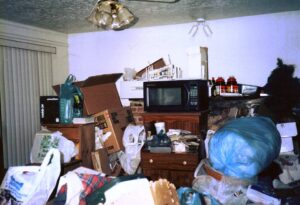 Unfortunately, yes. And that brings up an issue for anyone who is considering assisting a compulsive hoarder with cleanup of the home. It’s more than an eyesore, more than clutter, more than piles of trash. Most likely almost every permeable surface is contaminated with some sort of contagious microorganism.
Unfortunately, yes. And that brings up an issue for anyone who is considering assisting a compulsive hoarder with cleanup of the home. It’s more than an eyesore, more than clutter, more than piles of trash. Most likely almost every permeable surface is contaminated with some sort of contagious microorganism.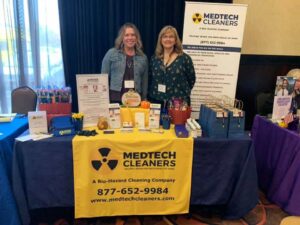
 Suicide remains the second leading cause of death* for young people, and the threat is especially significant for college students. The college experience is of itself a stressful time for most. It represents a major shift in lifestyle, going from having one’s routine basically structured to having to take responsibility for your own activities. And for many college students, it also involves moving away from friends and family.
Suicide remains the second leading cause of death* for young people, and the threat is especially significant for college students. The college experience is of itself a stressful time for most. It represents a major shift in lifestyle, going from having one’s routine basically structured to having to take responsibility for your own activities. And for many college students, it also involves moving away from friends and family. Who steps in to deal with the aftermath depends on whether it was simple property damage or if there is some sort of biological waste at the scene – blood, bodily fluids, or even a body or human remains. If those are present, so is the likelihood of what’s called a biohazard. Even animal remains or fluids might be hazardous as well.
Who steps in to deal with the aftermath depends on whether it was simple property damage or if there is some sort of biological waste at the scene – blood, bodily fluids, or even a body or human remains. If those are present, so is the likelihood of what’s called a biohazard. Even animal remains or fluids might be hazardous as well.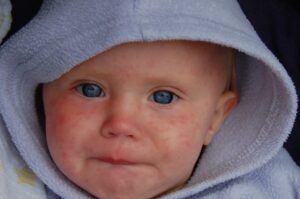 Thought to have been all but eradicated in 2000, measles has reared its head again, in some places in almost epidemic proportions. Active outbreaks have been reported in the past year in at least 23 states, one of them being Washington. (The first confirmed case was in 2018 Clark County in the southwest part of the state, including Vancouver. Since then it has spread.) Measles is highly contagious; in fact, the CDC states that approximately 90% of unvaccinated individuals who are near to a person with the disease will contract it themselves. (However, if you contracted measles as a child, you have developed a natural immunity.)
Thought to have been all but eradicated in 2000, measles has reared its head again, in some places in almost epidemic proportions. Active outbreaks have been reported in the past year in at least 23 states, one of them being Washington. (The first confirmed case was in 2018 Clark County in the southwest part of the state, including Vancouver. Since then it has spread.) Measles is highly contagious; in fact, the CDC states that approximately 90% of unvaccinated individuals who are near to a person with the disease will contract it themselves. (However, if you contracted measles as a child, you have developed a natural immunity.)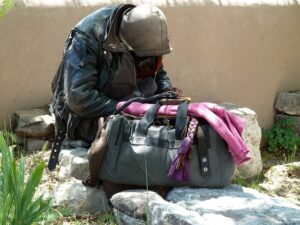 In many of
In many of 
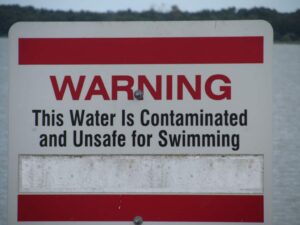 Recent news of a
Recent news of a 


